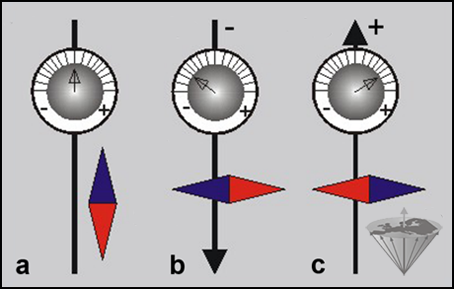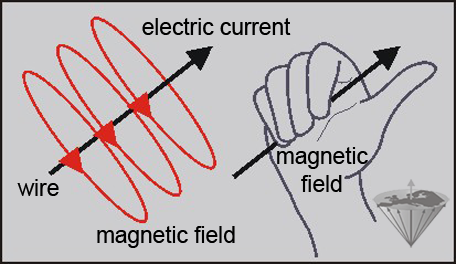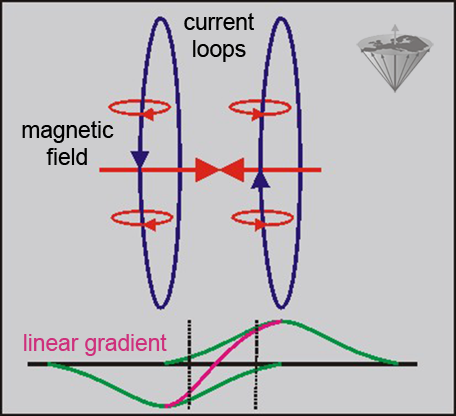





 agnetic phenomena are fundamentally electrical in nature. Since the first half of the nineteenth century it had been known that electric currents create magnetic fields. However, only 100 years later Werner Heisenberg was able to show that ferromagnets owed their properties to cooperative electrical actions of the atoms.
agnetic phenomena are fundamentally electrical in nature. Since the first half of the nineteenth century it had been known that electric currents create magnetic fields. However, only 100 years later Werner Heisenberg was able to show that ferromagnets owed their properties to cooperative electrical actions of the atoms.
The magnetic field of a permanent magnet is easily perceivable; the field created by electric current is slightly more difficult.
A fundamental discovery which opened the way to understanding magnetic phenomena was made in 1820 by the Danish physicist Hans Christian Oersted, who demonstrated that a compass needle was deflected from its normal north-south orientation when a current-carrying wire was placed parallel to the needle.
The deflection follows the direction of the current and the resulting magnetic field surrounds the wire (Figure 01-02).

Figure 01-02:
Deflection of a compass needle placed parallel to an electric-current carrying wire (blue = north; red = south).
(a) no current in the black wire;
(b) current flowing to the bottom;
(c) current flowing to the top.
If one passes electric current in the same direction through two wires parallel to each other, they will attract each other; if the current is passed in opposite directions, the wires will move away from each other. In other words, the electric current in the wire creates a magnetic field depending on the direction of the current (Figure 01-03).

Figure 01-03:
The right-hand rule.
If the direction of the current is indicated by the thumb of the right hand, the direction of the magnetic field corresponds to the direction of the fingers.
But the reverse is also true: a magnetic field creates movement of electrons. If we have an oscillating magnetic field around a wire, a voltage is induced and there will be electric current in the wire which is the principle of an electric generator. In MR imaging such a current is induced and gives rise to the MR signal. As in a generator, the greater the magnetic field, the greater the voltage will be.
The magnetic field around a wire or a wire loop diminishes non-linearly with distance. However, when one places two wire loops with opposite currents flowing in the distance of their diameters parallel to each other, one can create a linearly changing magnetic field between them. This field in the middle between the two loops is also described as a constant field gradient (Figure 01-04).

Figure 01-04:
Overlapping magnetic fields (green curves) creating a linear gradient (magenta).